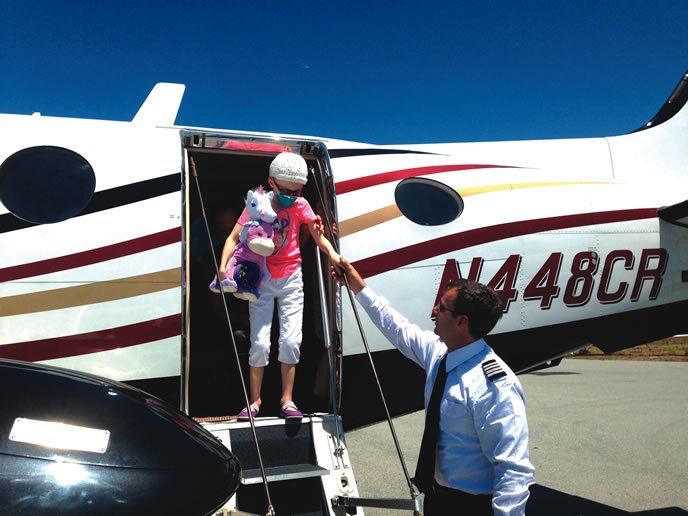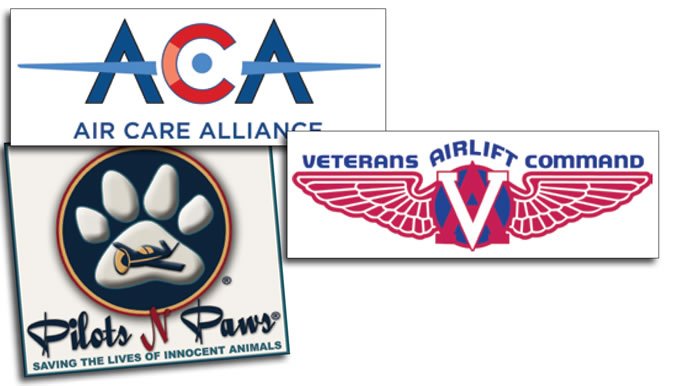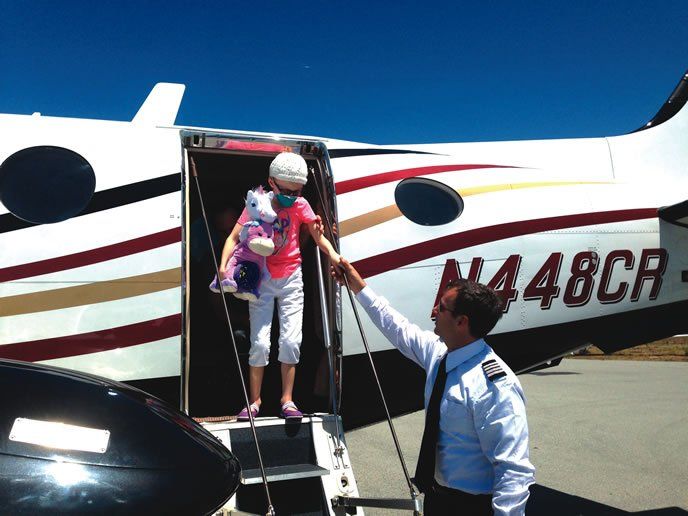Donating your time, skill and aircraft (rented or owned) as a volunteer pilot supporting a public benefit organization can be the most rewarding flying you ever do. Whether it’s medical transport (by far the largest segment), environmental and conservation support, search and rescue, emergency response, pet transport or one of the many other types of public benefit flying, you can help others doing something you love while clearly demonstrating the value and capabilities of general aviation.

The demands associated with a PBF flight—such as special needs passengers (who may be clueless about personal airplanes), medical and other equipment that may be needed for the flight, possibly very busy airspace, rugged terrain, short, narrow airstrips and maneuvering the airplane to ensure the best view of an area of interest, to name a few—mean pilots usually are more involved than when off for a $100 hamburger. And pilots tend to push ourselves to complete flights we’ve said we’re going to make, so mission-continuation bias can affect our judgment. In addition to doing a good deed, flying as a volunteer pilot means a serious look at safety considerations we might not be used to handling.
The Mission Mindset
While each type of volunteer flying has its own special concerns, the safety issue that overlies all operations is the mission mindset. We are of the opinion that PBF flights should never be referred to as missions because of the heavily laden connotations of the term. It adds to the pressure pilots put on themselves to carry out flights no matter what and, we believe, has lead to accidents where pilots have made the decision to go or continue when they should have postponed the flight or diverted once en route. Even though it may be called a mission, think of it as an optional flight.
One of the basic axioms of aviation is that there are no emergency takeoffs. It is especially true in volunteer flying. You may be taking a person for medical treatment, but it is never going to be emergency treatment. The medical transport PBF organizations do not accept such passengers. Even searching for a downed aircraft or lost child cannot influence the go/no go decision—the accident record is rife with fatal crashes involving pilots and passengers who went out to conduct a search in crummy weather and became the subject of an additional search.
In our opinion, the first rule of safety for a volunteer pilot is to be able to say no. The volunteer pilot’s decision-making process should be spring-loaded to the “no” position. The weather, capabilities of the airplane, pilot readiness and all other variables involved in the proposed flight have to be good enough to convince the pilot to move to the “yes” position. It’s been our long-term experience that PBF organizations will fully support a volunteer pilot who declines a trip for safety or operational reasons. They want safe pilots, and the last thing they want is an accident of any sort—they were formed because they wanted to help people, not hurt them.

Recurrent Training
Most PBF organizations require that their pilots do recurrent training more often than the biennial requirement of the FARs. Time and again we’ve seen that the one variable that affects general aviation safety is frequency of recurrent training. We recommend volunteer pilots go for a flight review at least annually—every six months is even better. That’s what the pros do, and you’re going to be flying people who don’t know much about little airplanes and are putting their trust in you.
If you are going to be making a transport flight that will involve IFR ops, is your IFR currency at just the FAR basics? We recommend an IPC within the last six months. Your flight also may involve going into an airport that is on the edge of your skill set. When is the last time you used a 2500-foot grass strip at the airplane’s gross weight? It also might be a good idea to brush up a little and make sure you haven’t gotten into the bad habit of carrying an extra 15 or 20 knots on final.
Weather
You’ve been making weather decisions for some time, so your PBF flight planning should only require a little tweaking. We recommend that you adjust your personal rheostat to slightly more conservative to help offset the mission completion pressure that is going to hit you the first time you’ve got a flight proposed in a few hours and the weather is on the “maybe so, maybe not” boundary. This is not the place for charter pilot wannabees who decide that they’ll go so long as the weather is at published approach minimums even if it is in driving rain.
For flying that requires good VFR such as environmental support (photography often is involved) or search and rescue, going in marginal VFR may not be a good idea even though you may be able to do it successfully. The issue becomes the ability to clearly see your objective, and going may just be wasting a flight—something you’re paying for. Turbulence is also a consideration—a passenger on the verge of airsickness is not a good observer. If you can, plan the flight to take place before heat or wind will generate bumps.
Passengers
Usually, your PBF organization will provide information on your passengers prior to the flight. That information should include their weight and everything they plan on bringing with them, including not only luggage but folding wheelchairs, pet crates, oxygen tanks and other objects you may not be used to handling. Allow a fudge factor—passengers have been known to lie. It’s also not unusual for them to show up with something extra, persons, packages or both. “Surely you can fit this in?” is the first step along the path of being over-gross. Be prepared to say no, and be prepared to cancel the flight at the last minute because of something the passenger says or does you cannot safely accommodate.
Make an extra effort to communicate with your passengers—they are going to be nervous. The more they understand about you and what is going on, the better—and safer—the experience will be for everyone. What may seem basic to you, such as how to fasten and release a safety harness, is completely foreign to a person only accustomed to automotive seat belts. Headsets and how to use an intercom system are other items with which passengers are not likely to be familiar.
Brief everything—how to get in and out of the airplane, how all the exits work, seat belts, sterile cockpit, noises they are going to hear, what they’re going to feel. Openly discuss motion discomfort and sick sacks. Talking about it ahead of time means less chance of an unpleasant problem later. Your PBF organization may have a passenger briefing checklist. We also recommend the one in the AOPA’s Air Safety Foundation’s excellent online PBF safety course.
En route, talk with your passengers and pay attention to what and how they respond. They’ll always say, “Fine,” when you ask how they feel—what matters is how they say it.
Flight Operations
The FAA long ago authorized use of the call signs “Compassion” or “Angel Flight” when operating a PBF flight. Additional details may be available from the organization for which you’re flying and usually worked out between ATC and the sponsoring organization. Using such a call sign—only when passengers are aboard, not when positioning, please—it identifies you as a flight that might benefit from a little extra attention. It doesn’t give you special handling or priority; however, controllers have been known to work a little harder to provide direct routing or respond to a request for a different altitude due to turbulence.
If you have an emergency during the flight, medical or otherwise, don’t mess around—declare it. You’re the pilot in command; marshal the resources available to you when you need them. A controller cannot give you priority handling just because you ask for it; you have to declare that you have an emergency to go to the front of the line. If it’s a medical emergency, the controller is your ally in arranging to have an ambulance waiting when you land.
Paying It Forward
Public benefit flying lets you help make the world a little better, one flight at a time. It enhances the image of general aviation and may give you a reason to do even more flying, making you a safer pilot. It also may push your personal comfort zone and definitely demands that you bring your A game for skills and decision-making.
Moreover, respectfully using your pilot skills to benefit others places additional responsibilities on your shoulders. People without any knowledge of your abilities are placing their utmost faith in you to get them to their destination safe and sound. Don’t let them down.
Rick Durden has been a volunteer pilot for LightHawk for over 25 years and was one of three recipients of the 2015 Endeavor Award for Public Benefit Flying.




